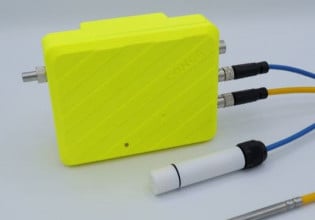M
Hi all,
I am having problems doing motion control with a servo motor. The problem is that the error (difference between setpoint position and acutal position) never, or almost never, reaches zero, but oscillates slowly about zero, e.g. 1 to -1 increments.
I do the motion control using a DAQ-card, and it is desirable that the system reaches an exact position, i.e. error=zero.
I think the problem has to do with the finite min. velocity at which my axis can move. When the axis has stopped, and the error is small, but non-zero, the PID output starts to increase due to the integral term, and the axis stays still until the output reaches a voltage that is high enough to start the axis. However, at this point the axis moves too far, and then the same thing happens but in the opposite direction, repeatingly until by chance it manages to stop at a zero error.
The voltage-band around zero (-1 to 1V) at which the signal is too weak to start the axis I have tried to compensate with a look-up table. However, it doesn't remedy my problem, only shortens the oscillation period.
Any hints, someone?!!
thanks,
Mats
I am having problems doing motion control with a servo motor. The problem is that the error (difference between setpoint position and acutal position) never, or almost never, reaches zero, but oscillates slowly about zero, e.g. 1 to -1 increments.
I do the motion control using a DAQ-card, and it is desirable that the system reaches an exact position, i.e. error=zero.
I think the problem has to do with the finite min. velocity at which my axis can move. When the axis has stopped, and the error is small, but non-zero, the PID output starts to increase due to the integral term, and the axis stays still until the output reaches a voltage that is high enough to start the axis. However, at this point the axis moves too far, and then the same thing happens but in the opposite direction, repeatingly until by chance it manages to stop at a zero error.
The voltage-band around zero (-1 to 1V) at which the signal is too weak to start the axis I have tried to compensate with a look-up table. However, it doesn't remedy my problem, only shortens the oscillation period.
Any hints, someone?!!
thanks,
Mats






